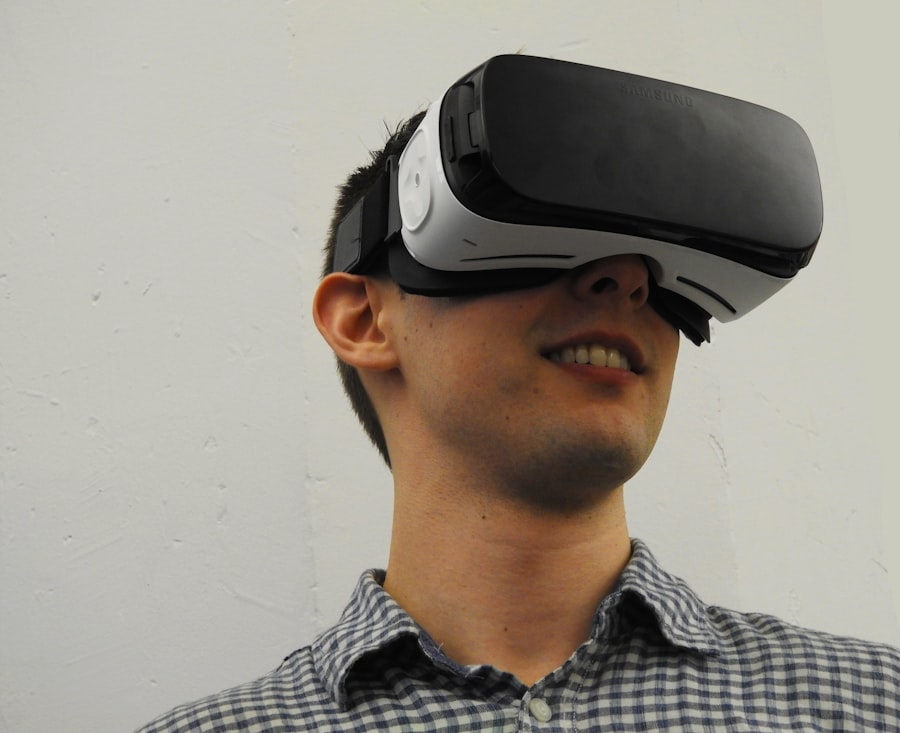Download links
How to install Exploring the Wonders of Virtual Life APK?
1. Tap the downloaded Exploring the Wonders of Virtual Life APK file.
2. Touch install.
3. Follow the steps on the screen.
Description
The concept of virtual reality (VR) has its roots in the mid-20th century, with early experiments in immersive environments that sought to transport users into alternate realities. One of the pioneering figures in this field was Morton Heilig, who developed the Sensorama in 1962, a multi-sensory machine that combined 3D visuals, sound, and even smells to create an immersive experience. This invention laid the groundwork for future developments in VR technology, although it remained largely experimental and niche for several decades.
The term “virtual reality” itself was popularized in the 1980s by Jaron Lanier, a computer scientist and artist who founded VPL Research, one of the first companies to sell VR products. During this period, VR was primarily associated with gaming and military training simulations, capturing the imagination of tech enthusiasts and researchers alike.
The 1990s saw a surge in interest, with companies like Sega and Nintendo attempting to introduce VR gaming to the mainstream market. However, these early attempts were hampered by technological limitations, such as low-resolution graphics and cumbersome hardware. It wasn’t until the 2010s that VR began to gain significant traction, thanks to advancements in computing power, graphics rendering, and display technologies.
The release of the Oculus Rift in 2016 marked a pivotal moment in the industry, as it brought high-quality VR experiences to consumers at an accessible price point. This resurgence sparked a wave of innovation, leading to the development of various VR headsets and applications across multiple sectors, including gaming, healthcare, and education.
Key Takeaways
- Virtual reality has a long history, dating back to the 1950s, and has evolved significantly over the years.
- Virtual life has had a profound impact on society and culture, changing the way we interact, work, and entertain ourselves.
- Beginners in virtual worlds should prioritize safety, set boundaries, and take breaks to avoid potential negative effects.
- Virtual life has great potential for education and training, offering immersive and interactive learning experiences.
- While virtual life can have mental health benefits, such as stress relief, it also poses risks like addiction and social isolation.
- The future of virtual life holds exciting innovations and possibilities, including advancements in technology and new applications in various industries.
The Impact of Virtual Life on Society and Culture
The advent of virtual life has profoundly influenced societal norms and cultural practices. As individuals increasingly engage with virtual environments, traditional boundaries between physical and digital experiences are blurring. Social interactions have transformed significantly; platforms like VRChat and Rec Room allow users to connect with others from around the globe in immersive settings.
These virtual spaces foster a sense of community that transcends geographical limitations, enabling friendships and collaborations that might not have been possible otherwise. However, this shift also raises questions about authenticity and the nature of relationships formed in digital realms. Critics argue that while virtual interactions can be enriching, they may also lead to superficial connections that lack the depth of face-to-face communication.
Moreover, virtual life has become a canvas for cultural expression and creativity. Artists and creators are leveraging VR technology to produce immersive experiences that challenge conventional storytelling methods. For instance, projects like “The Night Cafe,” inspired by Vincent van Gogh’s work, allow users to explore a 3D rendition of the artist’s iconic paintings.
Such experiences not only enhance appreciation for art but also democratize access to cultural heritage by allowing individuals to engage with it in innovative ways. Additionally, virtual reality has found its place in activism and social movements, providing platforms for marginalized voices to share their stories and experiences in compelling formats that resonate with wider audiences.
Navigating Virtual Worlds: Tips for Beginners

For those new to virtual life, entering these digital realms can be both exciting and overwhelming. One of the first steps is selecting the right hardware. While high-end VR headsets like the Oculus Quest 2 or Valve Index offer superior experiences, there are also more affordable options available that can provide a taste of virtual reality without breaking the bank.
Beginners should consider their budget, intended use—whether for gaming, socializing, or educational purposes—and the space available for movement when choosing a headset. Once equipped with the necessary hardware, newcomers should familiarize themselves with the controls and interface of their chosen platform. Many VR applications come with tutorials designed to help users acclimate to their new environment.
It’s advisable to start with simple experiences that allow for exploration without overwhelming complexity. Games like “Beat Saber” or “Job Simulator” are excellent entry points as they provide engaging gameplay while helping users become comfortable with VR mechanics. Additionally, joining online communities or forums can be beneficial; these platforms often offer tips, support, and recommendations for new users navigating their virtual journeys.
The Potential of Virtual Life for Education and Training
| Metrics | Statistics |
|---|---|
| Virtual Reality (VR) in Education | 87% of educators believe VR would have a positive effect on learning |
| Virtual Training Programs | 60% of organizations use virtual training programs for employee development |
| Engagement | Virtual learning increases engagement by 80% |
| Retention | Retention rates increase by 25-60% with virtual training |
Virtual life holds immense potential for revolutionizing education and training across various fields. Immersive learning environments can enhance engagement and retention by providing experiential learning opportunities that traditional classrooms cannot replicate. For instance, medical students can practice surgical procedures in realistic simulations without risking patient safety.
Programs like Osso VR allow trainees to hone their skills in a controlled environment where they can make mistakes and learn from them without real-world consequences. Beyond healthcare, VR is making strides in fields such as history and science education. Virtual field trips enable students to explore ancient civilizations or distant planets without leaving their classrooms.
Platforms like Google Expeditions have made it possible for educators to take students on immersive journeys through time and space, fostering curiosity and a deeper understanding of complex subjects. Furthermore, VR can cater to diverse learning styles; visual learners benefit from interactive simulations while kinesthetic learners engage through hands-on activities within virtual environments.
Virtual Life and Mental Health: Benefits and Risks
The intersection of virtual life and mental health presents both opportunities and challenges. On one hand, virtual environments can serve as therapeutic tools for individuals dealing with anxiety, phobias, or PTSD. Exposure therapy has been enhanced through VR technology; patients can confront their fears in a safe space under the guidance of trained professionals.
For example, individuals with a fear of heights can experience simulated heights gradually, allowing them to desensitize themselves to their anxiety triggers effectively.
The immersive nature of VR can lead to escapism, where individuals may prefer virtual interactions over real-life connections.
This detachment can exacerbate feelings of loneliness or depression if not balanced with healthy social interactions outside of digital spaces. Additionally, excessive screen time has been linked to various health issues, including eye strain and disrupted sleep patterns. It is crucial for users to establish boundaries around their virtual experiences to maintain a healthy relationship with technology.
The Future of Virtual Life: Innovations and Possibilities

As technology continues to evolve at a rapid pace, the future of virtual life is poised for remarkable innovations that could reshape how we interact with digital environments. One area of significant potential is the integration of artificial intelligence (AI) within virtual worlds. AI-driven avatars could provide personalized experiences tailored to individual preferences and learning styles, enhancing user engagement across various applications—from gaming to education.
Moreover, advancements in haptic feedback technology promise to create even more immersive experiences by allowing users to feel sensations within virtual environments. This could revolutionize industries such as gaming and training by providing realistic tactile feedback that enhances immersion. Imagine a scenario where a surgeon can feel the resistance of tissue during a simulated operation or where gamers can experience the impact of every hit in a combat scenario.
Additionally, as 5G technology becomes more widespread, it will facilitate seamless connectivity and reduce latency issues associated with online multiplayer experiences in VR. This advancement could lead to more dynamic social interactions within virtual spaces, allowing users from different parts of the world to collaborate in real-time without technical hindrances. In conclusion, the trajectory of virtual life is marked by continuous innovation and exploration.
As society adapts to these changes, it will be essential to navigate the complexities of virtual existence thoughtfully—balancing its benefits against potential risks while embracing the myriad possibilities it offers for enhancing our lives across various domains.
If you are interested in exploring more about virtual life, you may want to check out the article on the most highly rated apps for virtual experiences at this link. This article can provide insights into the different virtual platforms available and how they are being received by users. Additionally, you may also want to review the DMCA policy at this link and the privacy policy at this link to ensure you are aware of the guidelines and regulations surrounding virtual interactions.
FAQs
What is virtual life?
Virtual life refers to the experience of living and interacting in a digital or virtual environment, often through the use of technology such as virtual reality, augmented reality, or online platforms.
What are some examples of virtual life?
Examples of virtual life include virtual reality games and simulations, social media platforms, online communities, and virtual worlds such as Second Life and The Sims.
How does virtual life differ from real life?
Virtual life differs from real life in that it takes place in a digital or simulated environment, and the interactions and experiences are mediated by technology. While virtual life can offer a sense of escapism and creativity, it may not always accurately reflect the complexities and nuances of real life.
What are the benefits of virtual life?
Some potential benefits of virtual life include opportunities for creativity and self-expression, the ability to connect with others from around the world, and the potential for immersive and engaging experiences.
What are the potential drawbacks of virtual life?
Drawbacks of virtual life may include issues related to privacy and security, the potential for addiction or over-reliance on technology, and the risk of disconnecting from real-life relationships and experiences.
How is virtual life impacting society?
Virtual life is impacting society in various ways, including influencing how people socialize, work, and entertain themselves. It has also raised questions about the boundaries between the digital and physical worlds, and the implications for mental health and well-being.





